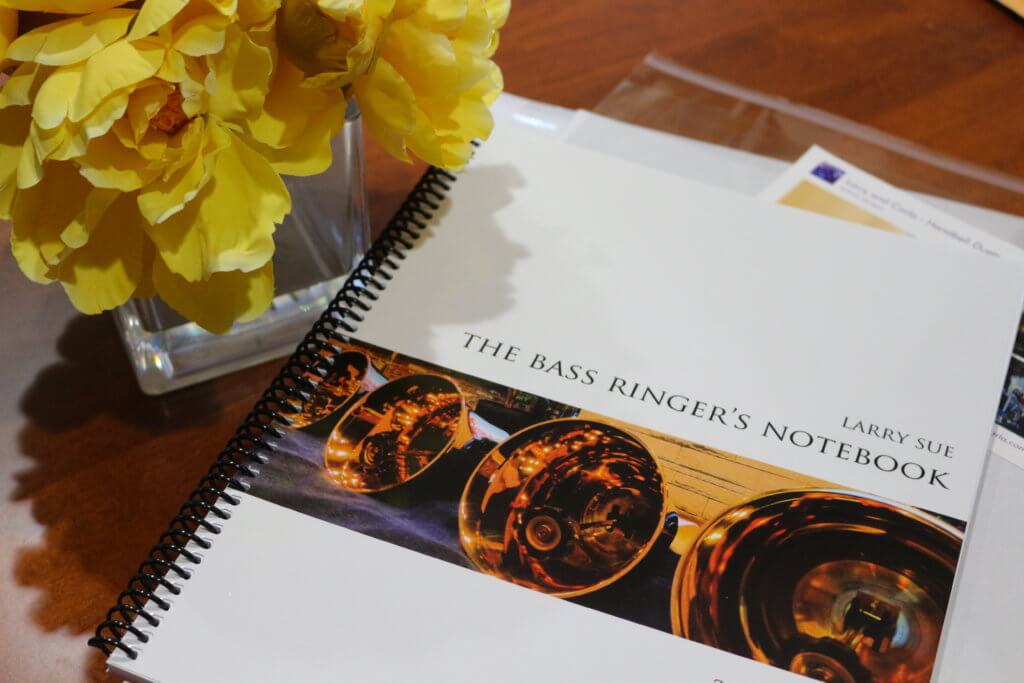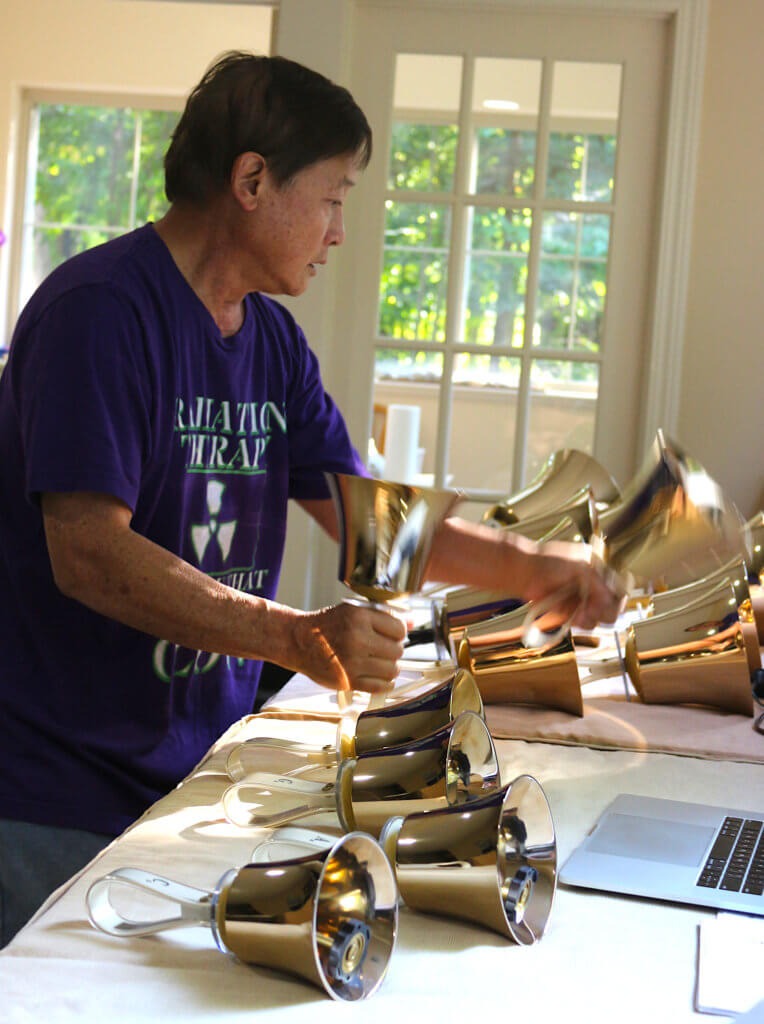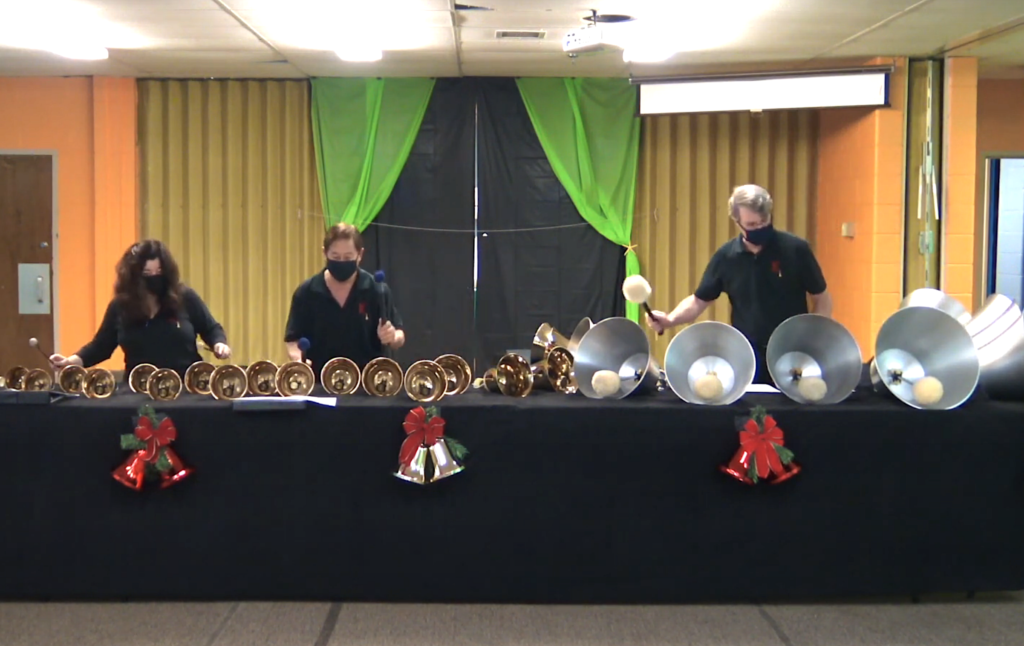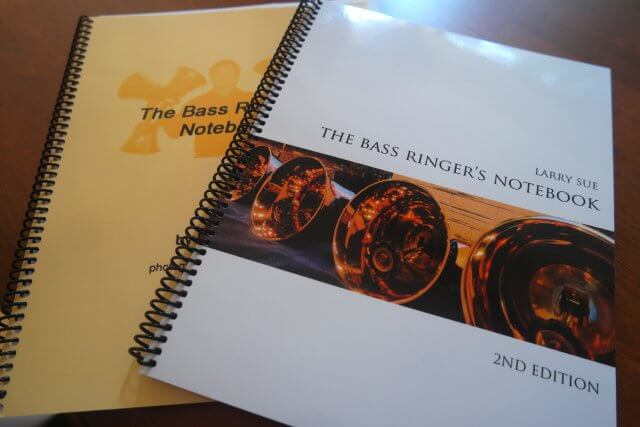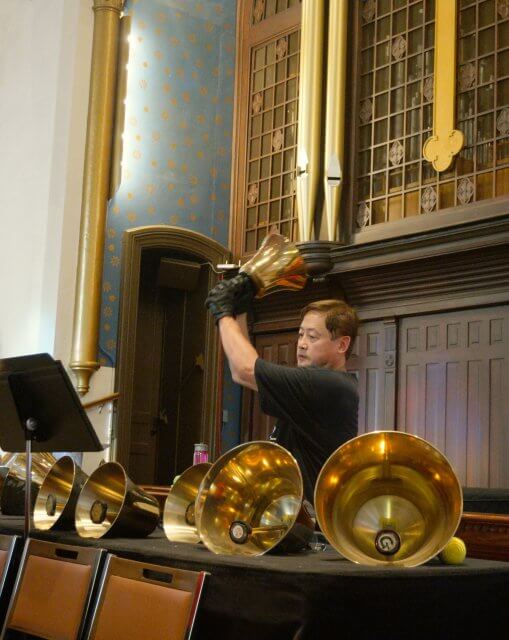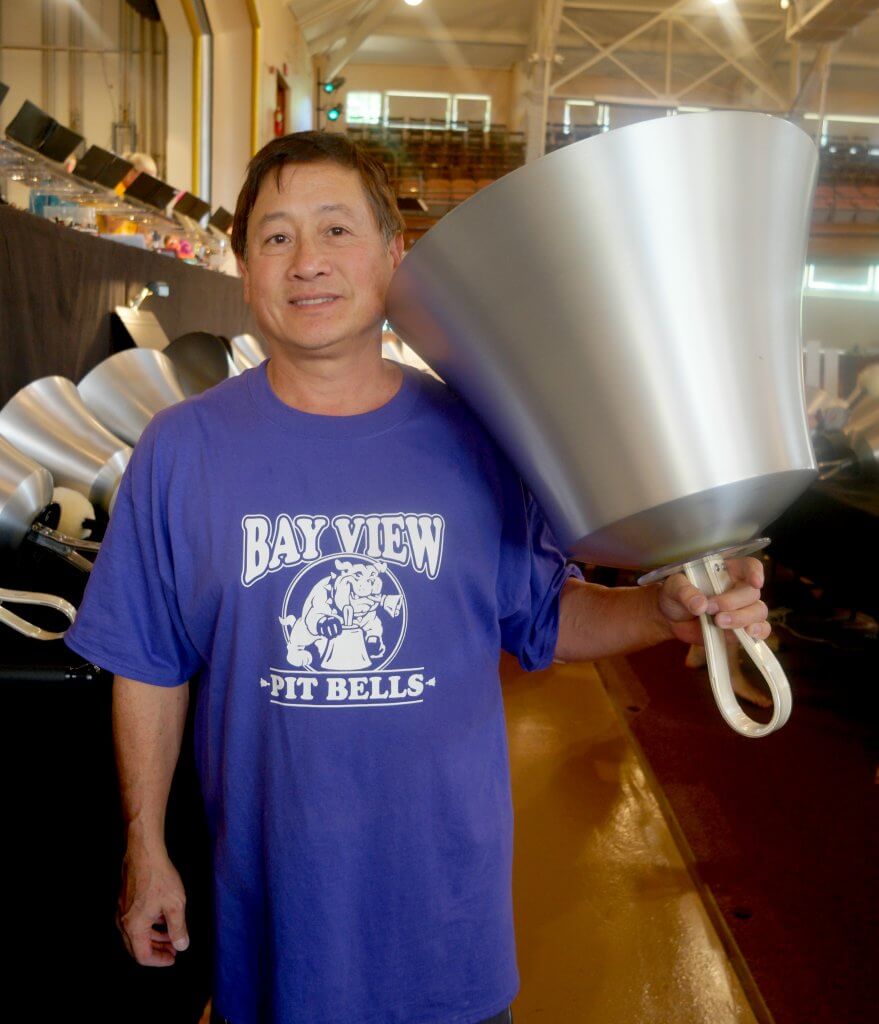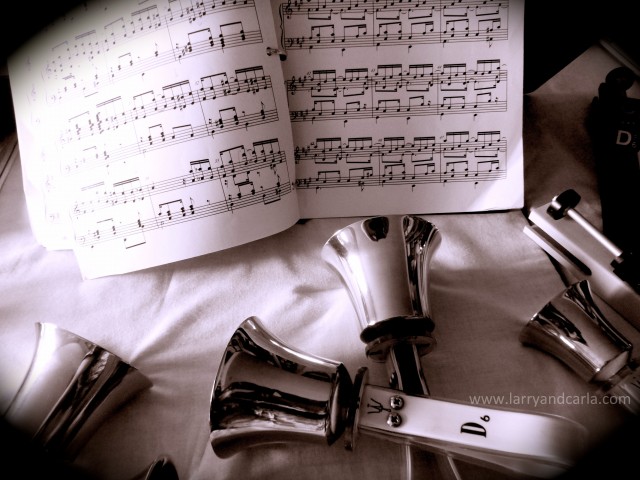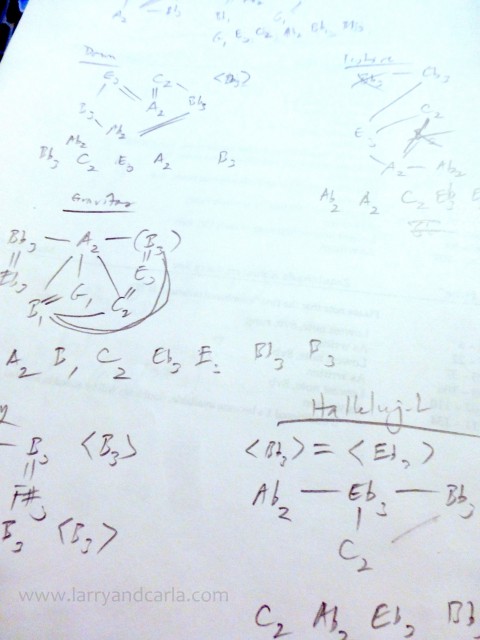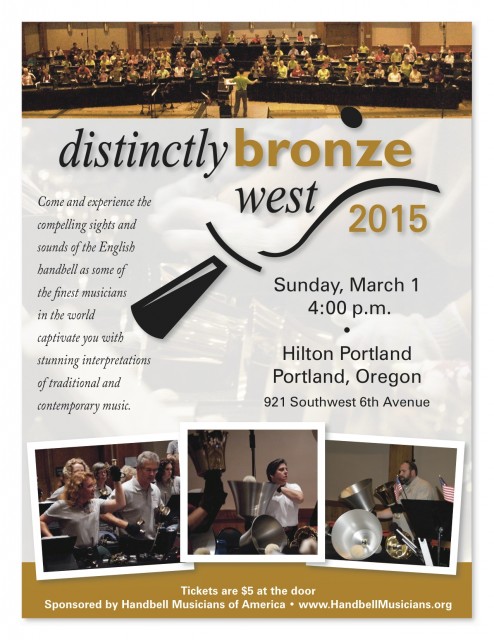Did you catch Larry’s recent performance of Danny Boy (also known as the Londonderry Air) on our Facebook page recently? In case you missed it, here’s the video, now available to watch on Vimeo:
Larry first performed Danny Boy as a bass handbell solo at the at the Los Altos Sub-Acute and Rehabilitation Center in California, way back in 2001. At the time, he was helping out with a young handbell choir Valley Vibrations, based at Valley Church in Cupertino. The group was performing at the rehabilitation center, and since the bass bells weren’t getting much use, Larry was able to do a “test run” of his bass solo as part of that performance.
He performed the piece again at the Handbell Musicians of America Area 12 Conference in 2004, in two locations: Ontario, CA and Honolulu, Hawaii, where David Davidson was the clinician.
Fast-forward to 2024, and after 20 years, it seemed like the right time to get this piece out again, and see if Larry was still up to the challenge of playing it.
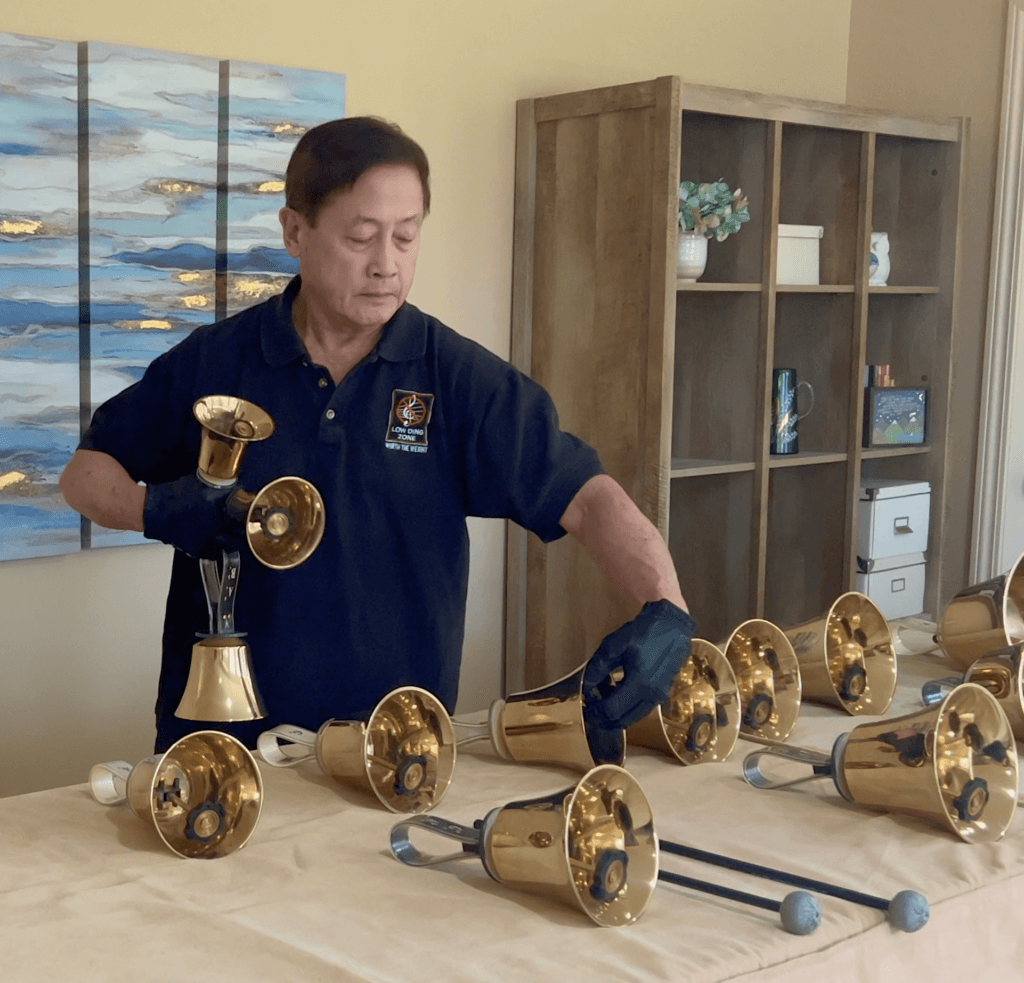
Some of the challenges involved in this arrangement
A bass handbell solo will inevitably have its challenges! This piece uses handbells ranging from C3 to A5. The lowest bells weigh around 9 lbs each, and the first section of the piece starts with the melody played on those bells.
The first section was challenging to play, not only because of the weight of each bell, but because of the layout and spacing. You can’t be casual about picking up and putting down bass bells, because if it goes wrong, it could be disastrous. The second section requires concentration, because of the double malleting. Larry modified the layout of the bells in this piece from the way he’d done it in 2004, to add the 4-in-hand option for the final section.
The other challenge, of course, is that Larry is twenty years older than he was when he first played this bass solo! Still, after just a few weeks of practising, he managed to get to the point where he could play the whole thing (more than six minutes) from beginning to end, and that felt like quite an achievement. If you watch the video closely, you’ll even catch a few instances of Larry using the “aerial self-pass” technique to transfer a bell swiftly from one hand to another. It’s impressive-looking with the bass bells!
A few outtakes!
Needless to say, there were a few outtakes before Larry got this one right!
Would you like to play this bass handbell solo?
If you’d like to play this piece, the sheet music is available to download from Choraegus. A piano accompaniment mp3 is also available, which can be useful if you don’t have a pianist available. It’s the same backing track Larry used in his performance.
Finally, don’t forget that The Bass Ringer’s Notebook remains one of the must-have instruction books for anyone serious about bass handbell ringing. The book is available in hard copy only, from Choraegus.
